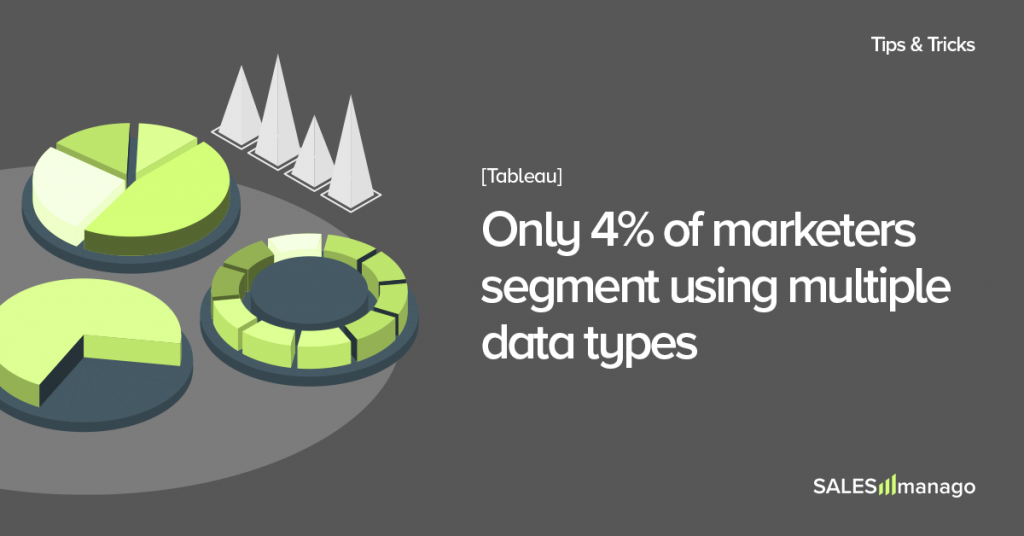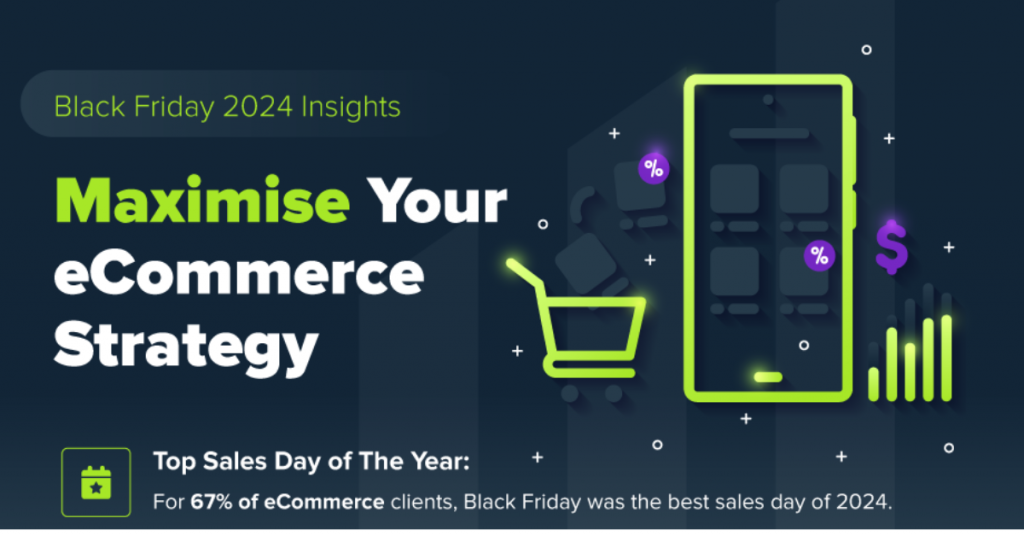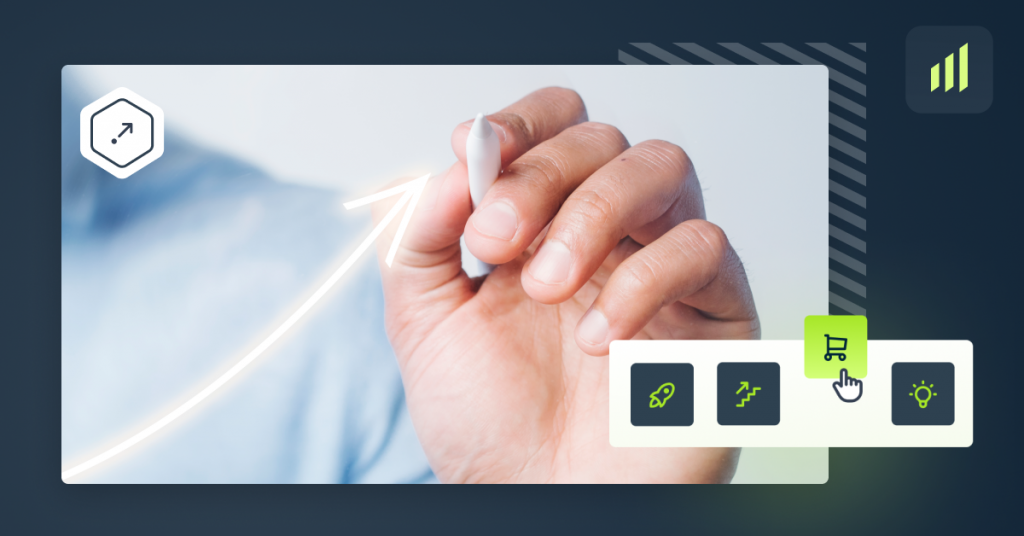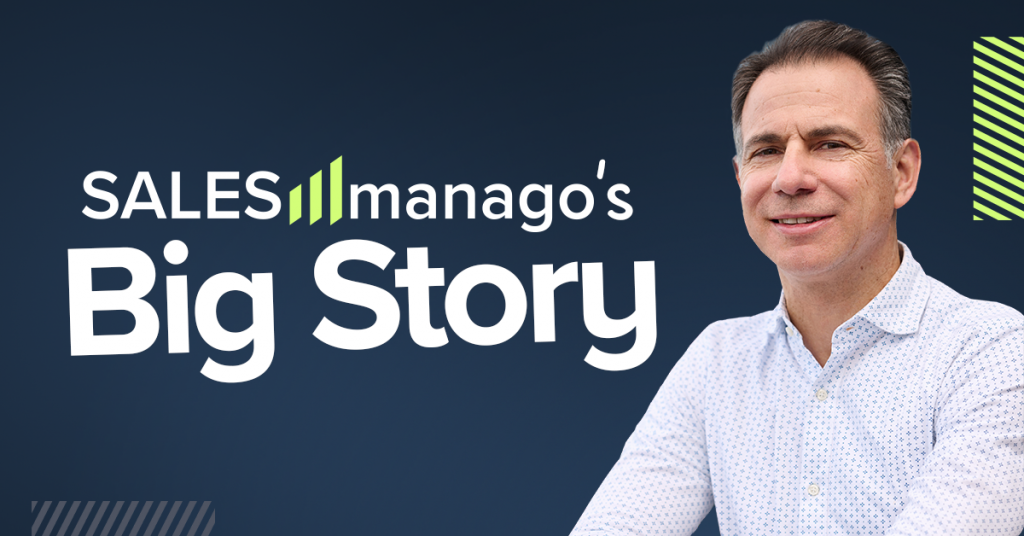Segmentation is a basis for any coherent and structured marketing activity and we’ve been in the loop about it for ages. The problem is that in 2024 traditional segmentation is not accurate enough to allow you to provide precious customers with the experience personalized on the level they are accustomed to. But hey, there’s a silver lining! Now, even the small fish in the big business pond can dive into the world of hyper-personalization.
We’ve known about the need for segmentation in online businesses for quite some time. Research shows that 80% of consumers are more likely to purchase from brands that offer personalized experiences. Segmentation leads to 3 to 5% increase in returns on promoted sales. Surprisingly, a whopping 42% of marketers don’t segment and only 4% segment with multiple data types.
In the meantime, the methods employed by the biggest eCommerce players made customers accustomed to an extremely personalized shopping experience. They will now expect the same from you.
Hyperpersonalization, or 1:1 segmentation allows you to create customized offers for each recipient on a massive scale. This has an impact on both in-store revenue and CLV of its customers. How exactly can you apply hyper-personalization to different types of eCommerce? Here are 5 examples of super advanced and turbo effective segmentations.
Segmentation v Hypersegmentation
Hypersegmentation is, to quote Capgemini’s definition, the advanced and real-time customization of offers, content, and customer experiences on an individual level. How is this different from simple segmentation? Segmentation as we know it typically involves dividing a larger audience into small groups of people who have something in common. Hypersegmentation goes beyond simple criteria and rigid segmentation frameworks. It focuses more on creating ultra-accurate, sometimes even single-person segments that match the needs of your audience in real time.

Source: Capgemini Consulting
As such, it allows for a shift in marketing perspective. Instead of preparing a rigid framework and waiting for people to fit into it, marketers can follow and flexibly adapt to consumers’ needs in the marketing version of „here and now.”
For more on hypersegmentation, read:
Top 10 mind-blowing statistics about hyper-segmentation you have to know in 2024>>
[New Feature] AI, no-code Hyper Segmentation>>
5 super advanced segmentations for 5 different eCommerces
The world of eCommerce is beautiful and diverse. Each branch has its own specifics and its own way of approaching customers. What works well for a pet store (repetitive purchases from a similar category, returning customers) may no longer be good for a DIY store (larger purchases, often one-offs). Therefore, your segmentation system will vary depending on your brand, assortment, industry and many other factors. Below you will find an overview of 5 very effective segmentations for different eCommerces.
Example #1 For online pharmacy
Disclaimer: I will refer to the Polish market of online pharmacies. The law regulations may vary in different countries.
Characteristics: Pharmacies, including online pharmacies, are subject to marketing restrictions. In Poland, these restrictions are regulated by pharmaceutical law. As a result, online pharmacies have severely limited opportunities for paid promotion. The content presented can be either educational or informational. Therefore, a strong emphasis in online pharmacy promotion is placed on SEO content, content marketing, social media activities and community building around the brand. Additionally, in Poland, prescription drugs can be sold online, but they can only be picked up at a stationary pharmacy.
Fun fact: Those who buy pharmaceutical products online are more often women (41 percent of them indicated buying this type of goods compared to 27 percent of indications among men), people over 50 years old (44 percent compared to 16 percent for the 15-24 age group) and with higher education (46 percent compared to 21 percent among people with lower education) – according to the Gemius report “eCommerce in Poland”.
Segment: Woman from Krakow who have spent a minimum of 500 PLN (110 €) in the last 3 months
Targeting groups with a high probability of purchase is the essence of hypersegmentation. Additionally, gathering information that can be used in legally permitted marketing efforts is a perfectly appropriate practice. What’s more, RFM segmentation data can be used to navigate towards micro-conversions within segments.
Uses data from areas such as:
- RFM
- transaction analysis
- geolocation data (declarative or from GPS)
- gender detection
It is effective because: When it comes to pharmacies, gender recognition is of twofold importance. First, women are more likely to buy pharmaceuticals in online pharmacies. Often they buy them not only for themselves – in many Polish families it is women who play a nursing role and it is them who buy pharmaceuticals for children, partners or seniors.
Secondly, many products are designed for ailments related to biological sex, and a considerable number of preparations are also related to gender.
Location is useful if you have stationary points where you can pick up prescription drugs. On the other hand, information on the amount spent on medicines (especially when compared to average spending per individual – 313.8 PLN, or about 69 €*) places this person in the segment of high-spenders.
Making a purchase within the last 3 months is also a clue. Supplements and pharmaceuticals are products that are used regularly. So the segment will include active customers who have purchased products for a fairly high sum and have been using them for some time.
Actions: This portion of information is an excellent foundation for performing a variety of marketing activities, even with legal restrictions. These will include:
- a campaign informing about the possibility of shopping at a physical location in a given city,
- progressive profiling (collecting information about ailments),
- content marketing activities combined with SEO based on interests,
- educational lead nurturing,
- post-visit remarketing (dynamic emails),
- cross-selling.
What’s next? The categories of selected products are worth noting for further segmentation. This will help both in selecting appropriate educational cycles and designing content that may prove interesting for this group of recipients. Another behavior worth investigating is cross-channel attribution and last click attribution. It may help in further distribution of content to similar female customers.
Example #2 For Home & Garden eCommerce
Characteristics: The Home & Garden and DYI industries have specific buying patterns. In case of professionals, purchases are frequent, large and highly seasonal; in case of amateurs and people renovating their own living spaces, purchases are infrequent, often one-offs with a high up-selling potential. Thus, it is important to identify buyers’ needs well and to divide them into segments, within which further groups can be distinguished.
DIY stores offer a wide range of products of various brands and price ranges. You should take care of loyalty and good consumer experience. There is a chance that for the next bigger purchase they will choose a store that provides them with a lot of convenience and a good offer.
Segment: Users who buy once a year for low amounts mainly in brick-and-mortar stores but visit the website often, interested in products from the category Roofs
People who visit the site but buy stationary often look for inspiration and the best bargains online. Sometimes they perceive the world more kinesthetically than others. There is nothing wrong with that. Instead of changing their behavior, just embrace this shopping model and focus on building their loyalty among this segment.
Uses data from areas such as:
- RFM
- segmentation rules
- transaction analysis
It is effective because: People who make small purchases once in a while can actually become regular, paying customers. They already trust your store, sometimes they just need encouragement and guidance.
Actions: Identifying people who are likely to become returning, loyal customers with a high CLV is half the battle. There is a whole list of activities that can help in this process. It includes, but is not limited to:
- implementation of a loyalty program,
- implementation of progressive discounts (depending on the frequency of purchases),
- preparation of campaigns with recommendations based on interests,
- sending an educational cycle for people interested in the Roofs and related categories.
- Launching an automatic win-back scenario,
- Building a scoring model based on activity.
What’s next? Harness your knowledge of a particular customer’s interest category so you can add cross-selling and upselling to your efforts. AI and Machine Learning-based recommendations along with predictions on communication channel and purchase probability can be helpful. Systematic, consistent education and following changes in customer behavior should have the desired effect of increasing loyalty and CLV. It’s also a good idea to track in-store conversions, which a loyalty program and customer card can help with. Offline purchases can then be exported to the system as external events.
Example #3 For FMCG eCommerce
Characteristics: Online hypermarkets offer, like their offline counterparts, rapidly consumable products. Shopping in such places is characterized by high repetition and regularity. Very often customers keep buying the same products over and over again. This does not mean, however, that target groups are not evolving. Often online shoppers are willing to try new products from their favorite categories or add products from weekly deals to their shopping carts.
Segment: Woman in her mid-30s, buying frequently for small sums, with no mobile app installed
Just because someone buys little doesn’t mean they aren’t a good customer. Sometimes such frequent “small amounts” can guarantee steady income at quite a decent level. What’s more, this type of buying is compatible with the FMCG industry, which offers products that need to be constantly restocked in the household.
Uses data from areas such as:
- transaction analysis
- segmentation rules
- RFM
- SALESmanago Mobile
It is effective because: Segmenting audience groups by frequency of purchase and amount spent (RFM) has a proven track record of high effectiveness. Additionally, it allows you to move individuals between segments to those who spend the most on a monthly, quarterly and annual basis. It is worthwhile to regularly check which group fits these criteria and develop strategies to move as many people there as possible.
Actions: Depending on which RFM segment is most profitable for your store, it makes sense to consider how you can move that customer to a more profitable group. At the same time, it is a good idea to take care of their comfort level by taking into account their current habits. To this end, you can use:
- loyalty program,
- progressive discounts,
- upselling,
- activities aimed at micro-conversions in RFM segments.
What’s next? If it’s profitable for the customer to remain in the segment, you should reinforce that customer’s shopping habits. However, if small changes will make her part of a more profitable segment, it is worth preparing scenarios aimed at modifying her purchase behavior, e.g. increasing shopping frequency or cart value.
Upselling and purchase reminders at regular intervals are good practices to follow. You can also include an incentive like a progressive discount.
Additionally, encourage the customer to install the app and join the loyalty program, if only to complete her profile with a new set of behavioral-transactional data.
Example #4 For eCommerce with kids’ products
Characteristics: Children grow and use up products quickly. Moreover, children’s stores are subject to seasonal changes. They are associated with weather changes that force different behaviors. Therefore, these stores are characterized by high dynamics of change, which requires very precise targeting.
Segment: A woman, mother of two boys aged 3-5, who shops most often on a mobile app, who has not added any products to her cart in 3 months despite regular visits to the app
When a baby store offers products for children of all ages, parents often bond with the store for years. Keeping up with a child’s growth and needs is key to maintaining good, long-term relationships with shoppers.
Uses data from areas such as:
- segmentation rules
- RFM
- SALESmanago Mobile
- declarative data
It is effective because: The first and most important information is the one concerning the age of children. Psychomotor development is very much connected with it. It will influence both the toys, books as well as the clothes and accessories chosen by the parent.
Information about the gender of children will be important in the case of parents who select one type of toys and clothes for girls and another for boys (not everyone does it, but it is quite common practice).
The fact that the customer is active in the app and frequently buys from it (although not recently) suggests that there has been a change in her life. Before the customer goes off the radar for good, it’s worth running a campaign to get her to buy again.
Actions: There are a number of activities that can help you win the customer back. Among them, it is worth mentioning:
- win-back,
- funnel-based segmentation,
- inactivity alerts,
- Web and mobile application personalization.
What’s next? Lack of purchase activity despite visiting the app can mean many things – from changes caused by boys growing up, to a shift in living situation, to a temporary store switch caused by a competitor’s sale. Observe the effectiveness of your win back campaign and run it comprehensively, across different channels.
Example #5 For pet store eCommerce
Characteristics: Pet stores have a very clearly divided assortment (animal species) and an extensive category tree (food, grooming, accessories, etc.). The same products are often purchased at similar intervals (food, supplements, grooming supplies).
Segment: Users subscribed to the newsletter who bought a product(s) for their dog for the first time
Every adventure starts somewhere. Hence, as the first segment, I suggest first-time shoppers who have purchased for their pet and subscribed to the newsletter.
Uses data from areas such as:
- transaction analysis
- segmentation rules
- available communication channel
It is effective because: Those who have made a purchase and signed up for the newsletter have already taken the first steps leading to a relationship with the brand. Additionally, they have also provided general information about their pet. This is a good starting point for completing more detailed Zero- and First-party data and also for starting the lead nurturing cycle.
Actions: Such a segment can be used to launch the following activities:
- upselling,
- progressive profiling (gathering information about the dog’s breed, weight, age, etc.)
- lead nurturing (proper care of the dog),
- tailored product recommendations on the website.
What’s next? Gaining more and more detailed information about customers and their pets allows you to tailor your content and offers even better. Consider implementing loyalty programs and subscriptions, e.g. for pet food, for regular customers and run activities based on the specifics of taking care of a particular animal (taking into account its size, reaction to changes in seasons, life expectancy and changing needs). This could be the basis for expanding hyper-personalization, where the end result would be directing the message not only to owners of large dogs, but directly to Mark, the caretaker of a 30-kilogram young Golden Retriever Cheerio, or Sophie, the caretaker of a 73-kilogram St. Bernard Daisy who is about to give birth to puppies.
Effective segmentation in eCommerce – a few words to conclude
To effectively segment customers in eCommerce you do not need advanced technical knowledge. A key part of the process is to precisely define the goal, identify the characteristics of the recipient group and to correctly select the segmentation criteria. Predefined segments, the use of AI and prediction can help you experiment with audience groups and create advanced and highly effective segments tailored to the nature of any eCommerce.
If you want to work on segments in your eCommerce, take SALESmanago for a 30-day test drive.
Be sure to share the results of your experiments in the comments!
*According to a survey conducted by the BioStat® Research and Development Centre, in February 2020 an average Polish household spent around 273 PLN on drugs, supplements and other medicines. According to the Central Statistical Office, the average household in Poland at that time consisted of 2.61 persons. 273 PLN/2.61=104.6 PLN. Over a time horizon of 3 months, the average spending on drugs per person is therefore 104.6 PLN*3=313.8 PLN

 Follow
Follow
















